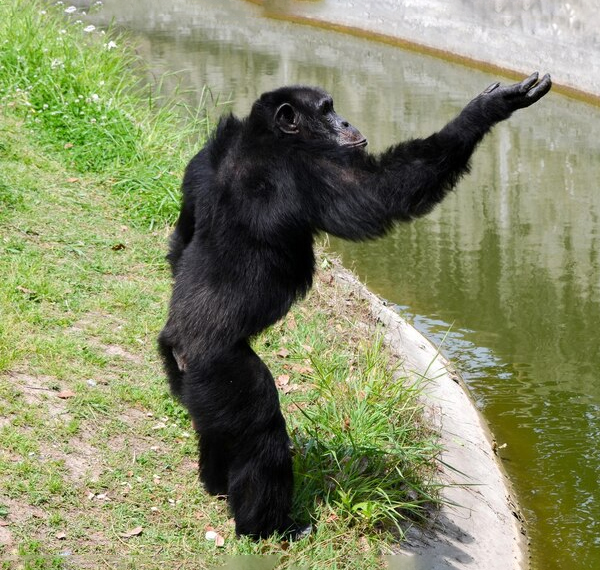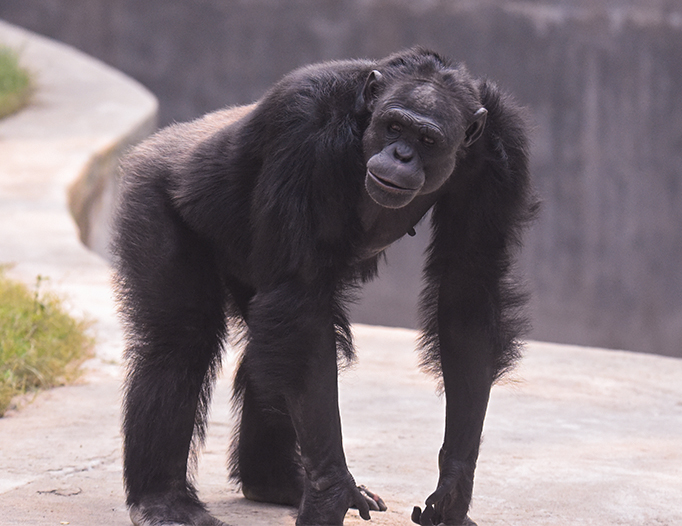Total Weight
Height
Diet
Lifespan
Total Weight
Height
Diet
Lifespan
The Chimpanzee at Patna Zoo is a charismatic and intelligent primate, captivating visitors with
its playful nature and remarkable abilities. Known for its dexterity and social behavior, this enchanting
creature serves as a symbol of wildlife conservation, reminding us of the importance of protecting our
natural treasures for future generations.
Chimpanzees are our closest living relatives, native to sub-Saharan Africa and found in the Congo Jungle.
They are social animals, and it is thought that humans and chimpanzees share a common ancestor. Patna Zoo has one male and one female chimpanzee, namely Kartik and Subhadra. Both these animals were acquired from Nandankanan Zoo, Bhubaneswar, through an animal exchange on 15.07.2012.


Patna Zoo recently modified the enclosure for its chimpanzee residents, providing them with
a spacious and naturalistic environment. The enclosure features sloping pagodas, climbing structures,
and interactive elements to stimulate their physical and mental well-being. It also includes a secure
barrier system to ensure the safety of both the chimpanzees and the visitors.
The zoo's efforts in
creating this enclosure aim to promote conservation and education while offering the chimpanzees a
comfortable and enriching habitat that closely resembles their natural surroundings.
The chimpanzee at Patna Zoo is a major attraction, captivating visitors with its intelligence and playful behavior.
Known for its human-like expressions,
it engages in climbing, swinging, and social interactions.
| Attribute | Details |
|---|---|
| Weight | Male: 40-70 kg, Female: 30-50 kg |
| Height | 3-5.5 ft (Male & Female) |
| Diet | Fruits, nuts, seeds, insects, and small animals |
| Lifespan | 30-40 years in the wild, up to 50+ years in captivity |
| Conservation Status | Endangered |
| Population in the Wild | Only 300,000 chimpanzees left |
| Social Structure | Live in groups (communities) of 20-100 members |
| Unique Behavior | Uses tools for gathering food (sticks for termites, leaves for water) |
| Hunting Pattern | Opportunistic feeders, sometimes hunt in groups |
| Mane Equivalent | Older chimpanzees have gray hair, similar to aging in humans |
| Closest Relatives | Humans (share 98.7% DNA), followed by bonobos |
Chimpanzees are omnivores, meaning they eat both plant-based and animal-based foods. Their diet consists mainly of fruits, leaves, seeds, nuts, and insects, with occasional small amounts of meat.
A balanced diet is essential for their health, energy, and survival. Fruits provide natural sugars for energy, while leaves and nuts offer fiber and essential nutrients.
Protein-rich foods like insects and occasional small prey help in muscle growth and brain development.
At Patna Zoo, chimpanzees receive a well-planned diet that mimics their natural eating habits, ensuring they get the necessary vitamins, minerals, and proteins for a healthy and active life.
Caretakers also use food enrichment activities to encourage their natural foraging behaviors and mental stimulation.
Open Now
All visits to Patna Zoo help fund our work both at the zoo and worldwide.